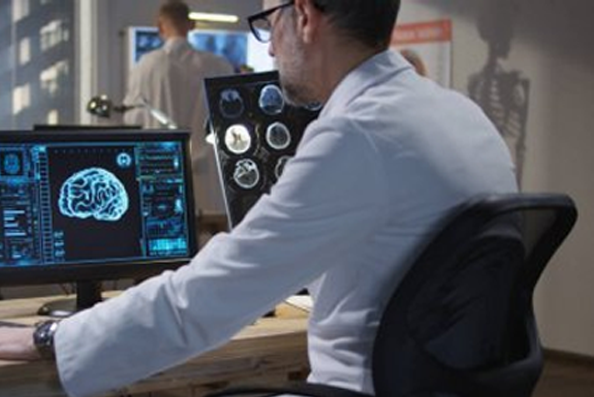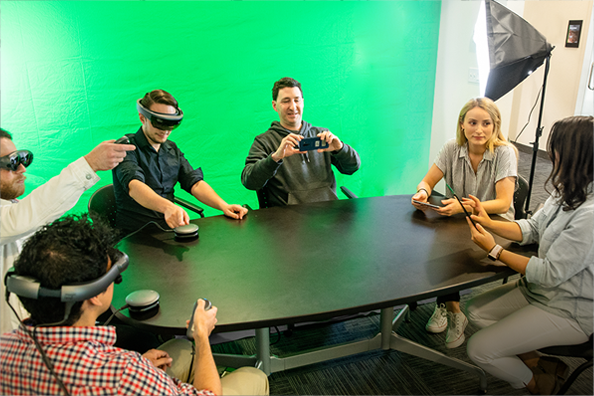DIVISIONAL
ORGANIZATION
Our unique approach to the development of advanced, mission-relevant systems is rooted in our core philosophy:
We prioritize working with end-users to capture an unfiltered view of challenges and to embed our specialized solutions within their familiar workflows.
We want to see our systems through the eyes of those who will benefit most.
Charles River is organized in three technical divisions with clear collaboration objectives to yield solutions with an extraordinary technical breadth.
Our multidisciplinary approach produces solutions coalesced around diverse scientific perspectives, unrivalled engineering aptitude, and tremendous technological capital.
1
Sensing, Perception, and
Applied Robotics
2
Human-Centered AI
3
UX Innovation
SENSING, PERCEPTION, AND APPLIED ROBOTICS
The Sensing, Perception, and Applied Robotics division develops and markets advanced software algorithms and integrated systems for image and video processing (feature extraction, pattern recognition, object detection and classification, tracking and motion analysis, etc.), human-based sensing (neuro and physiological sensing), navigation, signal processing, sensor fusion, and robot autonomy. Our research and products span the ground, sea, airborne, and space domains (AutoTRap Onboard™ and Awarion™). We’ve built up an extensive in-house library of human sensing (Sherlock™) and computer vision software components (VisionKit®) which enable us to rapidly design, prototype, and evaluate customized solutions for our customers’ most perplexing problems. Whether it’s designing an innovative, low-cost solution or achieving revolutionary new system performance capabilities, our talented engineers, scientists, and project managers always find a way to make it happen.




Our culture of collaboration across disciplines inspires us to break
down boundaries and expand the limits of creative thinking.
HUMAN-CENTERED AI
The Human-Centered AI division aims to develop leading-edge AI applications and systems while recognizing that people are core to the future of how AI is designed, built, deployed, and used. The division’s interdisciplinary team of scientists, designers, and engineers develop and assess the latest advances in machine learning, symbolic AI, and human-machine interactions to solve deeply challenging scientific and operational problems. We are widely published and serve as a world leader in probabilistic programming (PP) and machine learning, including two open source PP frameworks (Figaro™ and Scruff™) as well as Overmind, our reinforcement learning framework. Our organization is especially interested in pushing next generation hybrid-AI, which combines the best of symbolic, probabilistic, and deep learning technology.
A core tenet of our work is to understand how AI and people interact, particularly in topics such as explainable AI, where normally opaque deep learning algorithms are explained, making them understandable. This also includes concepts like Inverse Cognition, which predicts cognitive states and behavior choices from observations of communications and actions. We are developers of KWYN™, our platform for intelligent, adaptive training and operations that encompasses using AI technologies and visualizations to train, optimize human performance, and provide just-in-time guidance for operators across multiple domains such as medical, maintenance, and intelligence. Our work extends to cyber security (such as Odineye™), artificial social intelligence, predictive health maintenance, swarm robotics, and natural language processing (SFG Toolkit)—applying our human-centered AI technology to critical problems.




We have the unique ability to lead a team unlike any other,
harnessing the extraordinary breadth of our core IP
and an ongoing stream of breakthrough research.
UX INNOVATION
The User Experience (UX) Innovation division creates tools that help people interact with complex technologies in meaningful and efficient ways, including multimodal and mixed-reality interfaces. Our efforts result in innovative user experiences across diverse applications, from medical-skill training and decision-making, operations planning and command and control, to vehicle interfaces and human-robot interaction. Across all of our work, highly collaborative teams of research scientists, interaction designers, and software engineers partner closely with end users and domain experts to understand and address real-world needs. We apply proven design techniques, prototyping methods, and software engineering practices to iteratively develop and refine user interfaces that not only are useful and intuitive but also support appropriate trust in underlying autonomy and other enabling technologies.




We cultivate an environment that values and executes
on diverse viewpoints as we embrace opportunities to
solve the world’s most challenging problems.
DOMAINS OF FOCUS
Our broad customer base includes the US Department of Defense, National Institutes of Health, and other technology-driven agencies looking for solutions in these key areas:
Cyber
We find vulnerabilities and protect systems and networks from theft, damage, or disruption of hardware, software, and electronic data.
Defense
Our innovations support the functions of government directly related to national security.
Medical
Our research informs strategies for medical training and patient assessment.
Training
We create adaptive, intelligent training tailored to each individual, especially those maintaining complicated systems of systems.
